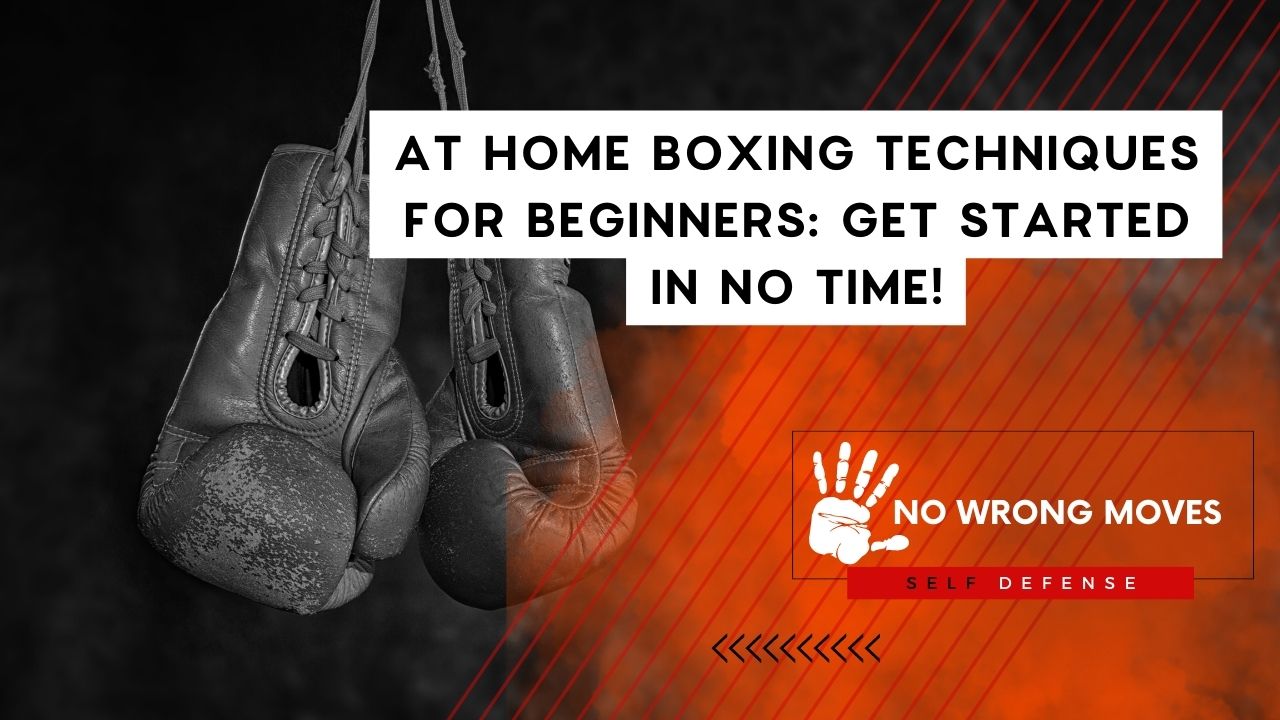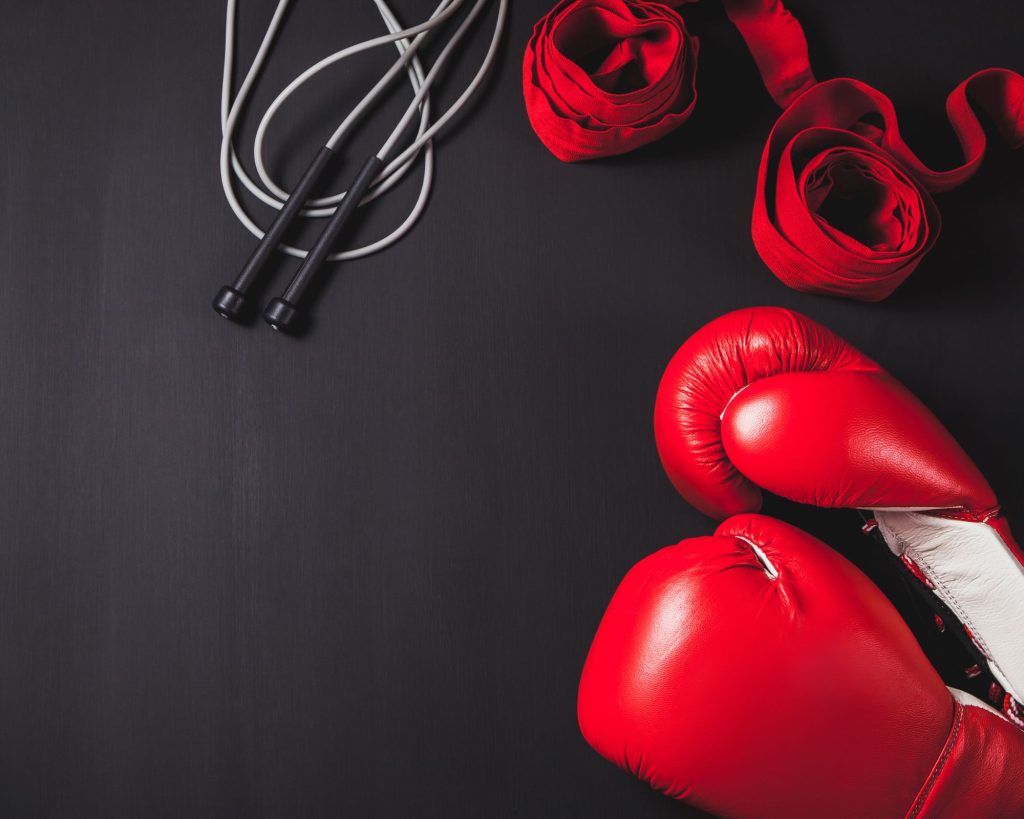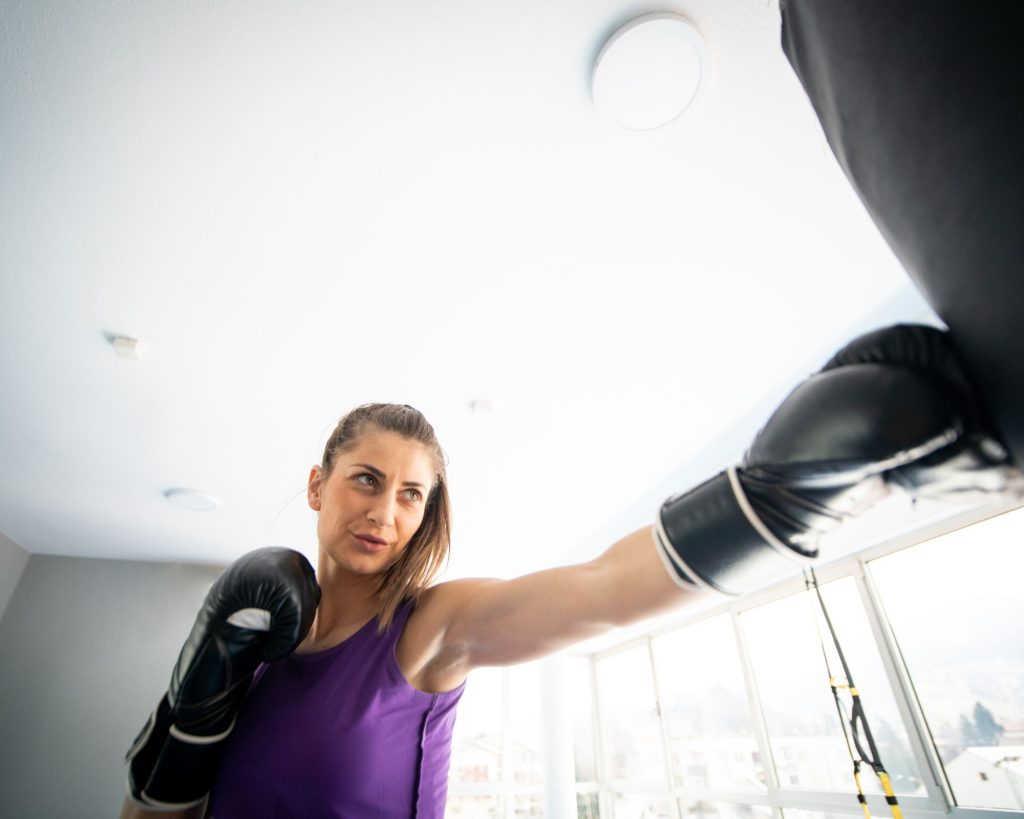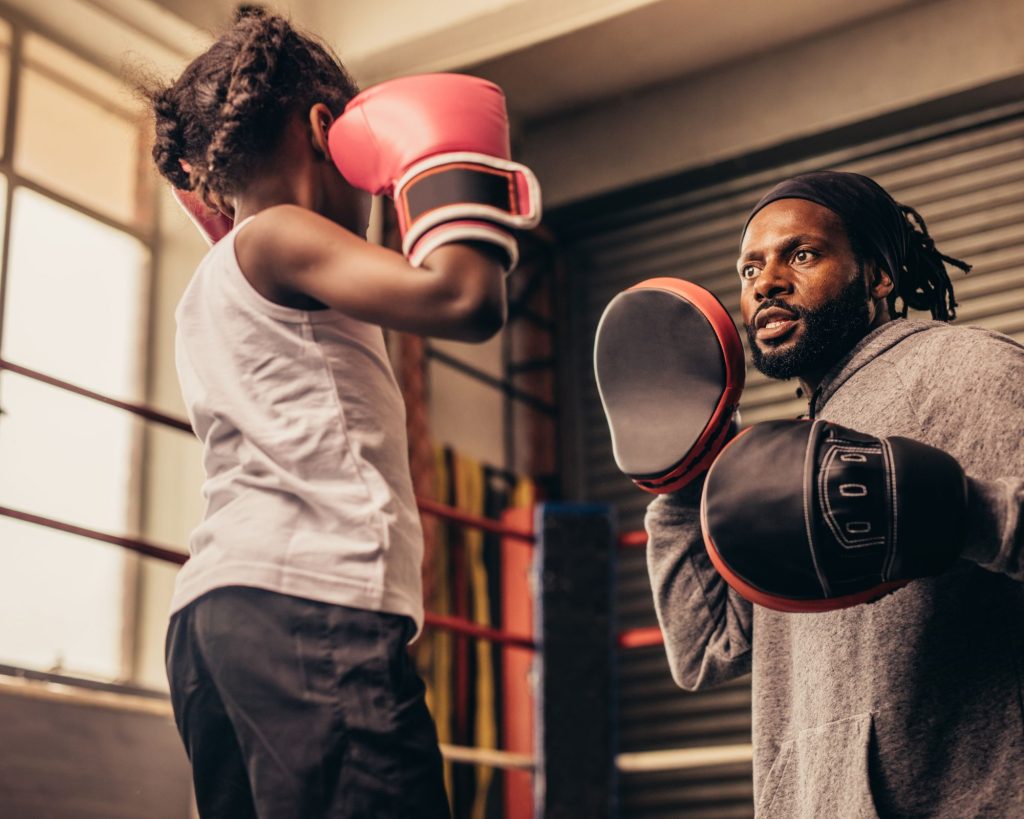
Boxing is a fantastic workout that can help you build strength, improve your cardio, and get in shape. While many people think of boxing as a sport that you need to go to a gym or boxing club to participate in, it's actually an excellent workout that you can do at home.
In this article, we'll take a look at the basic equipment you'll need, how to prepare your home boxing space, essential boxing techniques for beginners, and building your boxing workout routine. Let's get started!
Proper Equipment

Don't get too excited! Before you start punching away at a bag, it's important to find the right space to set up your equipment.
Make sure you have enough room to move around freely, and consider investing in some non-slip mats to help you with footwork.
Now, let's talk about the essential boxing equipment you'll need to get started. First up, hand wraps. These provide crucial wrist support and add a layer of padding to your knuckles.
Next, you'll need a pair of boxing gloves to keep your hands safe during those hard-hitting workouts. And finally, the pièce de résistance: a punching bag.
But with so many different types of hand wraps and boxing gloves out there, how do you know which ones to choose? Let's break it down.
For hand wraps, you have several options. Tape and gauze are the lightest and most protective, but can be a bit tricky to wrap by yourself. Traditional hand wraps are cost-effective and easy to learn, but can become loose during your workout.
Elasticated Mexican-style hand wraps conform to your hand and don't loosen, but they can be a bit thicker and add to your laundry pile.
And if you're looking for something even more convenient, FightCamp quick wraps are a great option. They're built to hold punch trackers in place and don't require any wrapping.
And as for boxing gloves, there are a few things to keep in mind. If you'll be mainly working on a heavy bag, consider getting a pair of heavy bag gloves. They're lightweight and easy to carry around, but do keep in mind that they don't offer much thumb protection.
Boxing training gloves are a good all-around choice, with a variety of styles and levels of protection. Just be aware that cheaper options may not last as long.
And if you're serious about competing, you'll want to invest in a pair of competition boxing gloves. They can be pricey and bulky to carry around, but they offer the best protection and quality.
Boxing Techniques: The Basics

Once you've got some decent equipment set up, you'll need to look into your techniques! There are a few basic but essential boxing techniques that every beginner should learn. These include the jab, the cross, the hook, and the uppercut.
You should also learn how to footwork and how to move around the bag. Just be sure to start slowly and focus on proper technique, rather than speed or power.
Don't get me wrong, speed and power are definitely important in boxing, but as a beginner, your priority should be getting the fundamentals down to a tee first.
Don't worry about how physically fit you are first; conditioning is something that'll come naturally with consistent effort and training.
Once you've learned the basics of boxing, it's time to start building your workout routine! This can include a warm-up, shadow boxing, bag work, and jump rope.
You can also add in strength training exercises like push-ups, sit-ups, and squats. You'll want to vary your routine, not only to keep it interesting and challenging, but also to avoid plateaus when training.
What Are The basic Punches In Boxing?
There are four main punches in boxing that every fighter should know: the jab, cross, hook, and uppercut. Each punch has its own unique purpose, so it would do you well to understand how to execute them correctly.
The Jab
The jab is the first punch you'll likely learn in any boxing class. It's a quick and sudden punch that's perfect for setting up combinations.
To throw a jab, start in your boxer stance with your hands next to your nose. Keep your hips in place as you punch straight out with your lead hand, twisting the knuckles of your hand so that your fingertips face the floor when your arm is extended.
Remember to keep your rear hand tight in a tight fist, tucked, and ready to defend. Then, quickly return your lead hand to the starting position.
The Cross
The cross is a powerful punch that can be used as a knockout blow. It's thrown across the body from your dominant hand, and you'll need to pivot on the ball of your back foot and rotate your hips forward to generate maximum power.
Start in your boxer stance with your fists closed and fingertips facing your chin. Punch your right hand straight forward, and as you throw your punch, pivot on the ball of your back foot and rotate your hips forward. Return your right hand and hips to the starting position, and you're good to go.
The Hook
The hook is a short power punch that can be thrown from either hand. It's arguably one of the most effective punches in boxing and can cause significant damage to your opponent.
To execute a proper left hook, start in your boxer stance with your fists closed tight, and your elbows bent to 90 degrees. Punch with your left hand, bringing your forearm completely out in front of you, with your knuckles facing the sky, and your fingertips facing the floor.
Remember to keep your feet, hand, and hips moving as one, and pivot slightly on your foot. Keep your back hand in a tight fist, tucked, and ready to defend, and return your hand, hips, and feet to the starting position.
The Uppercut
The uppercut is a close-range punch that can be used to land a powerful blow underneath your opponent's chin.
Start in your boxer stance with your fists closed, and your back heel slightly lifted off the floor. Pivot on the ball of your back foot, turning your knee and hip forward as your right hand swipes up towards the sky from your hip.
Keep your elbow bent, and your fingertips facing you, imagining ending the punch right under your opponent's chin. Remember to keep your left hand in a tight fist, tucked, and ready to defend. Then, return your right hand and hip to the starting position.
Punch Your Way to Better Health!

In this article, we covered the basics of boxing punches: the jab, cross, hook, and uppercut. We gave you specific instructions for each punch so you can learn how to throw them properly and effectively. By following our tips, you'll be well on your way to becoming a skilled boxer in no time.
Remember to start with the basics and practice regularly. As you become more comfortable with the punches, you can start working on combinations and footwork. And if you're ever unsure about your technique, don't hesitate to ask a trainer or coach for help.
Boxing can be a challenging sport, but with dedication and practice, it can also be incredibly rewarding. So grab your gloves and get ready to throw some punches! You never know where this new hobby might take you!
[author-box-jpx-fitness]
